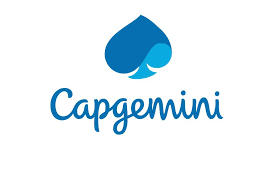Theory of Machines: Kinematic Joints & Degrees of Freedom
Master how to determine the DOF in a mechanical system with different kinematic joints and sliding/rolling contacts

Lectures -22
Resources -8
Duration -1.5 hours

30-days Money-Back Guarantee
Get your team access to 10000+ top Tutorials Point courses anytime, anywhere.
Course Description
In this course, you will master many types of kinematic joints and will be able to analyze a mechanical system to determine its Degrees of Freedom. You will understand common kinematic constraints such as the revolute, prismatic and rigid joints, and will learn how to deal with challenging cases such as over-constrained systems. You will also experience some more complex constraints such as the pin-on-slot joint, and the sliding and rolling contacts. During each lecture, you will find enough examples and illustrations to fully grasp the concepts and have a clear picture of them. After each lecture, there will be several exercises for you to practice what you have learned. Following each exercise, you will have access to my detailed solutions in a separate lecture, which might be a good chance for you to compare with yours and evaluate your learning process. After completing all the lessons, there will be a review section giving you a quick summary of all you have learned followed by some more complex exercises from the entire course. The role of this review is to make you prepared for the final exam coming at the end of the course. You can finally assess your exam using the provided solutions and celebrate your progress.
Goals
- Understand common types of kinematic constraints such as the revolute, prismatic and rigid joints
- Experience more complex constraints such as the pin-on-slot joint as well as the sliding and rolling contacts
- Master how to analyze a mechanical system to determine its Degrees of Freedom
- Learn how to deal with challenging cases such as over-constrained systems
- Find lots of examples to have a clear picture of complex concepts
- Practice what you have learned by completing a set of easy to complex exercises with detailed solutions
- Get prepared for the exam via a quick review of the entire course followed by some more complex exercises
- Have a chance to take a final exam and self-assess your progress using the provided solutions
Prerequisites
- No requirements. You will learn everything needed about the rigid bodies and the kinematic joints in order to determine the Degrees of Freedom in a Mechanical System.

Curriculum
Check out the detailed breakdown of what’s inside the course
Introduction and Course Outline
1 Lectures
-
Introduction and Course Outline 03:39 03:39
Understand Common Kinematic Joints
12 Lectures

Understand Pin on Slot Joint
3 Lectures

Learn Sliding and Rolling Contacts
3 Lectures

Course Review and More Complex Exercises
3 Lectures

Instructor Details

Shahram Shokouhfar
Dr. Shahram Shokouhfar has taught several mechanical engineering courses as a faculty instructor for many years. He has also worked as a Simulation Engineer and Software Developer in the Surgical Simulation Industry.
He has a passion of teaching engineering topics and enjoys helping people and following up their progress. He has an outstanding talent of making complex concepts easy to understand and apply.
His proven method of teaching is simple and effective: First grasp the rules of the game and then enjoy playing. He illustrates the concepts by simple examples and then naviagates you to practice and apply them in a sequence of problems with progressive level of complexity. At the end, not only you can solve fresh problems, but also you will be able to classify problems into familiar groups for which you have effective solution strategies.
Course Certificate
Use your certificate to make a career change or to advance in your current career.

Our students work
with the Best


































Related Video Courses
View MoreAnnual Membership
Become a valued member of Tutorials Point and enjoy unlimited access to our vast library of top-rated Video Courses
Subscribe now
Online Certifications
Master prominent technologies at full length and become a valued certified professional.
Explore Now


 Updated on Jul, 2024
Updated on Jul, 2024
 Language - English
Language - English